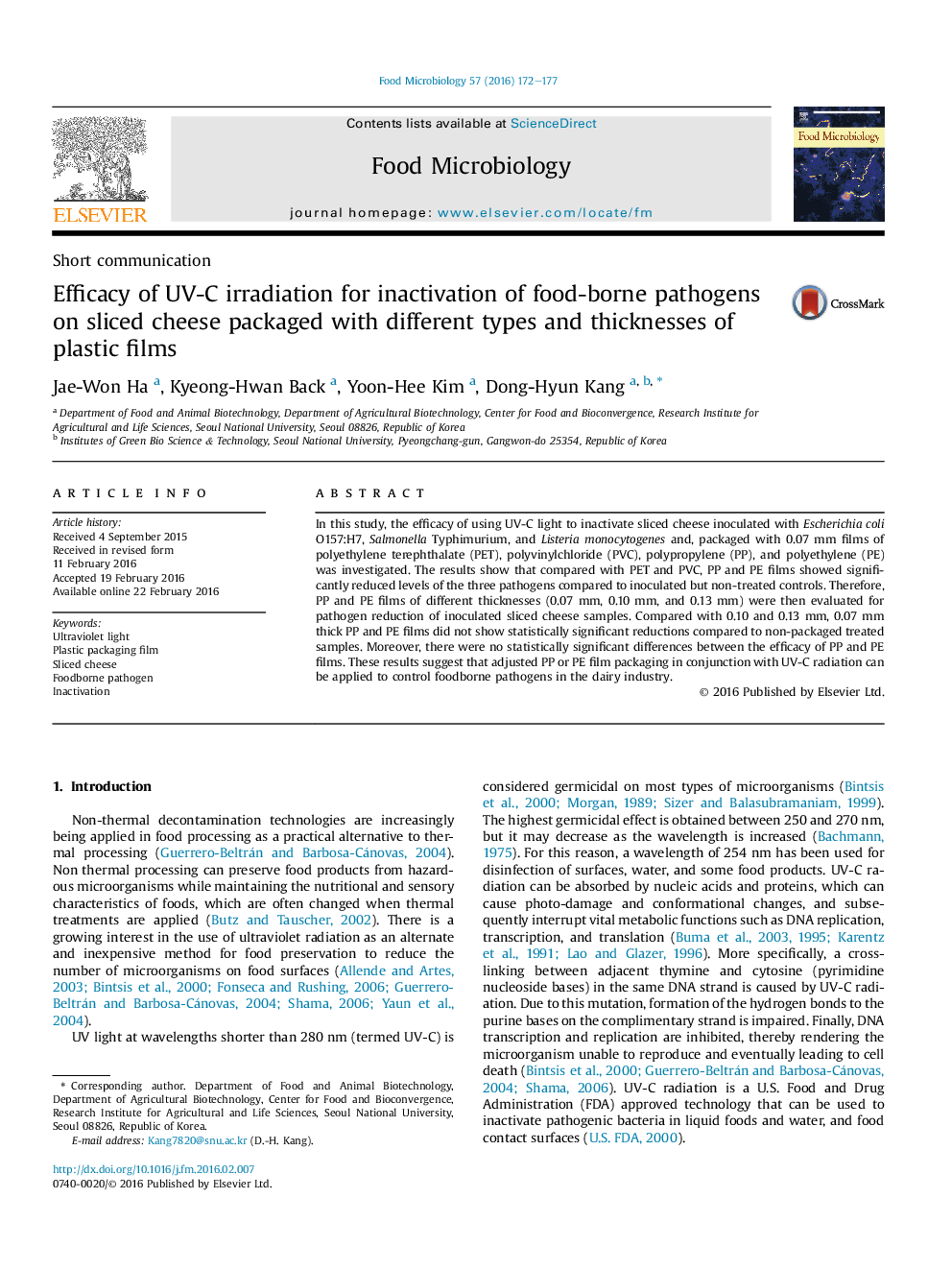| Article ID | Journal | Published Year | Pages | File Type |
|---|---|---|---|---|
| 4362614 | Food Microbiology | 2016 | 6 Pages |
•The transmission of UV-C radiation through various types of packaging film was investigated.•PET and PVC scarcely allowed transmission in the UV-C wavelength range.•UV-C irradiation significantly reduced three major pathogens on PP or PE film packaged samples.•PP and PE films with varying thicknesses were evaluated for pathogen reduction of inoculated samples after UV-C treatment.•PP and PE films more than 0.10 mm thick did decrease the bactericidal effects of UV-C radiation.
In this study, the efficacy of using UV-C light to inactivate sliced cheese inoculated with Escherichia coli O157:H7, Salmonella Typhimurium, and Listeria monocytogenes and, packaged with 0.07 mm films of polyethylene terephthalate (PET), polyvinylchloride (PVC), polypropylene (PP), and polyethylene (PE) was investigated. The results show that compared with PET and PVC, PP and PE films showed significantly reduced levels of the three pathogens compared to inoculated but non-treated controls. Therefore, PP and PE films of different thicknesses (0.07 mm, 0.10 mm, and 0.13 mm) were then evaluated for pathogen reduction of inoculated sliced cheese samples. Compared with 0.10 and 0.13 mm, 0.07 mm thick PP and PE films did not show statistically significant reductions compared to non-packaged treated samples. Moreover, there were no statistically significant differences between the efficacy of PP and PE films. These results suggest that adjusted PP or PE film packaging in conjunction with UV-C radiation can be applied to control foodborne pathogens in the dairy industry.
